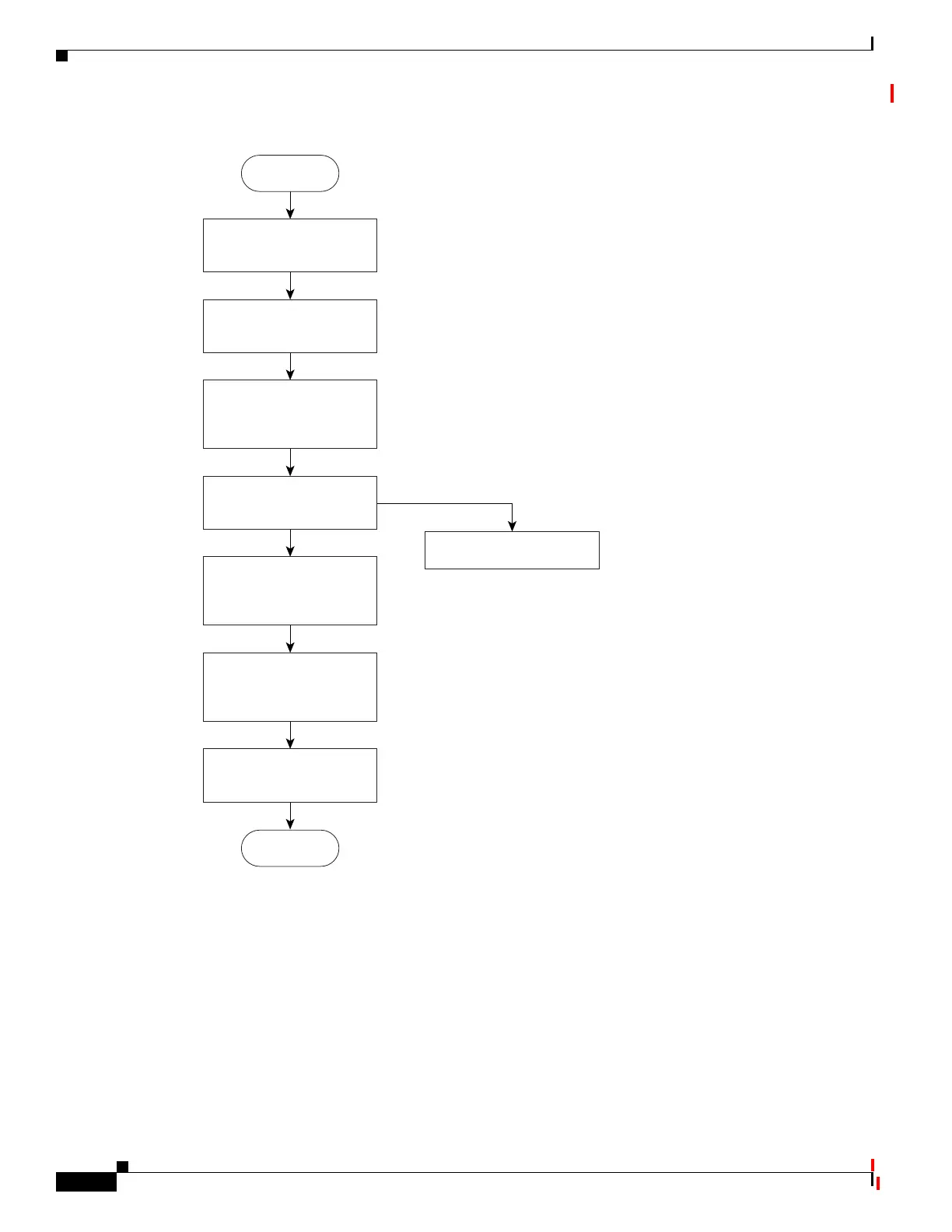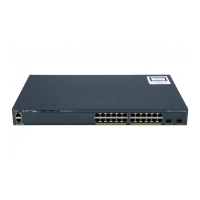33-18
Catalyst 2960 and 2960-S Switches Software Configuration Guide, Release 15.0(1)SE
OL-26520-01
Chapter 33 Configuring QoS
Understanding QoS
Figure 33-8 Queueing and Scheduling Flowchart for Egress Ports
Each port supports four egress queues, one of which (queue 1) can be the egress expedite queue.These
queues are configured by a queue-set. All traffic leaving an egress port flows through one of these four
queues and is subjected to a threshold based on the QoS label assigned to the packet.
Figure 33-9 shows the egress queue buffer. The buffer space is divided between the common pool and
the reserved pool. The switch uses a buffer allocation scheme to reserve a minimum amount of buffers
for each egress queue, to prevent any queue or port from consuming all the buffers and depriving other
queues, and to control whether to grant buffer space to a requesting queue. The switch detects whether
the target queue has not consumed more buffers than its reserved amount (under-limit), whether it has
consumed all of its maximum buffers (over limit), and whether the common pool is empty (no free
90565
Receive packet from
the internal ring.
Read QoS label
(DSCP or CoS value).
Determine egress queue
number and threshold
based on the label.
Are thresholds
being exceeded?
Send the packet
out the port.
Queue the packet. Service
the queue according to
the SRR weights.
Drop packet.
Start
Done
Ye s
No
Rewrite DSCP and/or
CoS value as
appropriate.

